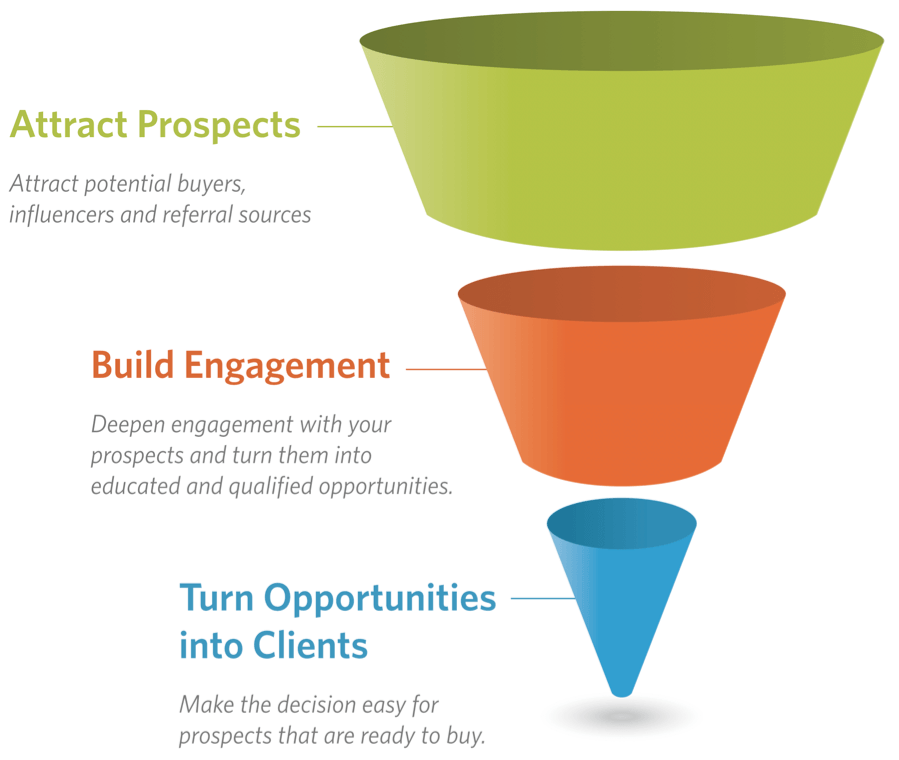Sometimes market research can reveal real surprises. The 2017 High Growth Survey was no exception.
Over 1,100 firms with combined revenues of over $200 billion participated in Hinge’s second annual study of marketing and growth for professional services firms. Participants were asked about a variety of topics including financial performance, strategy, and marketing.
During our data analysis, one find in particular startled us. We found that almost a quarter (23.1% to be precise) of high-growth firms reported that phone marketing had a significant impact on their marketing. Now, phone marketing had never been rated highly in our previous surveys of high-growth firms, so we were surprised to see rise to such prominence. We decided to investigate further, and a new picture came into focus.

What kinds of firms are using phone marketing?
First, we asked, “who’s using phone marketing?” Our analysis showed that they were mostly mid-sized firms that offered technology services. We also learned that these firms tended to focus on large prospective clients within a particular industry.
A typical firm that used phone marketing in their marketing mix generated median revenue of $20 million, had 60 full-time employees and 3 full-time marketing employees.
We then compared this profile to firms that don’t use phone marketing. The firms that relied on phone marketing were 65% more likely to provide technology services, 53% more likely to use industry specialization as a differentiator, and 60% more likely to target prospects larger than $500 million.
So what’s going on here? Why does a single segment of the market use phone marketing so disproportionately?
What made phone marketing successful for these firms?
Clearly, for this segment of companies phone marketing works. But it requires a significant investment, too. Of firms that used phone marketing, 28% invested significant effort (time and money) in the method — the most of any marketing technique we examined.
While we don’t have the data to understand exactly why phone marketing works for these firms, we have a theory. Based on what we know about these firms (they often specialize in an industry) and their target audiences (large, high-revenue businesses), they are probably selling narrowly focused, high-dollar-value services. Even if their failure rate is high (as is typical with phone marketing), business development teams at these firms may only need to make a few sales to meet their monthly quotas. And the personal element introduced in phone marketing may make the complex sale easier to close. While the investment may be high, so too are the returns.
I’m reminded of a quote from Guy Kawasaki, a successful marketer, author, and venture capitalist, who said:
“If you have more money than brains, you should focus on outbound marketing. If you have more brains than money, you should focus on inbound marketing.”
But what if you have both?
Of firms that use phone marketing:
- 82% also practice email marketing
- 71% also practice social media marketing
- 64% have optimized their website for search engines
- 55% use speaking engagements
- 50% actively blog
- 47% host downloadable, educational content on their website
This data suggests firms that use phone marketing aren’t necessarily “cold calling.” In fact, these firms are integrating a phone conversation with inbound and thought leadership marketing.
How does an integrated phone marketing–thought leadership program work?
I have a friend who works at an IT consulting firm that practices this integrated approach. When an online lead fills out a contact form and meets certain criteria to be qualified (a practice called lead scoring), a representative is assigned to call them back within five minutes.
This practice does a few things. It shows the prospective client they are valued by being responsive and showing high level of interest in their business. It also has the potential to prevent the prospect from contacting other competing firms.
Other firms build their calls around a piece of thought leadership. They will send a piece of research or educational content in advance of their call to warm up the prospect, establish context and stimulate engagement.
This approach builds value into the call — content provides a catalyst to spark a conversation and begin building trust.
How might your firm practice this approach?
The secret to this approach is to educate and qualify leads, warming them up to a phone conversation. The first step would be to set up the necessary digital infrastructure to attract prospective clients and build engagement.
Think of the marketing funnel broken down into three stages. In the first stage, the goal is to attract prospects. A search-engine friendly website, social media, and blog are good examples of top-of-the-funnel techniques that can attract prospects.

The next phase of the funnel aims to deepen engagement with prospects and turn them into educated and qualified opportunities. Webinars, speaking engagements, and downloadable content are examples of engagement-building marketing techniques.
Integrated phone marketing straddles the line between the middle and bottom sections of the funnel. At this stage, leads have been qualified as opportunities and are more likely to be receptive to a phone call. They aren’t necessarily ready to buy, but they want to learn more. And talking to a prospect directly can be a great way to move them closer to a sale.
Conclusion
Phone marketing isn’t for everyone. Like many outbound techniques, it demands a great deal of time, money and patience to succeed. But in certain situations it just makes sense. If you are selling a high-ticket-price service to a narrowly defined audience with ample budgets, phone marketing may provide the personal interaction you need to close a sale — or at least soften up a prospect for an imminent close.
But the firms that successfully embrace phone marketing are integrating calls with content marketing to establish a climate that is more receptive to a close. In theory, warming up the lead pool will cut down on the number of “no’s” you get before the inevitable “yes.”










